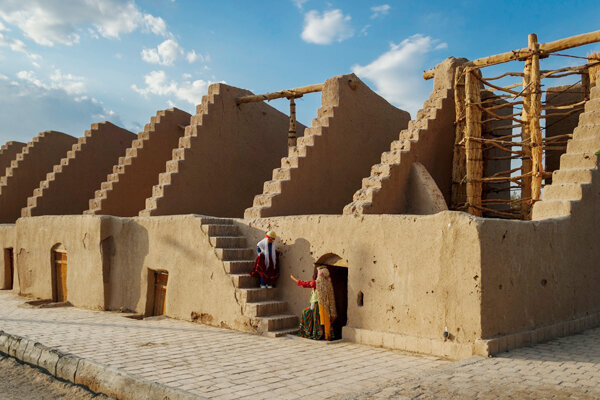Ancient windmills of South Khorasan in need of urgent demarcation

TEHRAN – A number of ancient windmills in South Khorasan province, eastern Iran need urgent demarcation, the provincial tourism chief has said.
New boundaries need to be defined for the centuries-old windmills, locally known as Asbads, located in the oasis city of Tabas-e Masina as well as Khansharaf village, Hadi Shahverdi explained on Saturday.
Defining legal boundaries for these historical structures could curb illegal constructions within them as well as help them receive better protection and preservation, the official added.
Hoffman kiln in Birjand and Manzarieh Mansion and Garden also need to be demarcated, he noted.
A collection of ancient Iranian windmills (locally called Asbads) has been inscribed on UNESCO's tentative list of World Heritage properties.
Experts believe such primitive yet significant machines bear testimony to the human being’s adaption to nature by transforming environmental obstacles into opportunities. Iranian Asbads enjoy a smart technique to grind grains, a technique that goes back to ancient times when the people living in the eastern parts of Iran invent it in an attempt to adapt themselves to nature and transform environmental obstacles into opportunities.
According to the latest official data, a total of 374 Asbads has been identified so far mostly in the eastern wing of the country, but not all of them in faultless conditions.
The development of Asbads took place due to the scarcity of water resources and continuous 120-day winds, which annually sweep through the east and southeast of the Iranian plateau from late May to late September. Wood, mud, and brick were the main construction materials for the two-story windmills.
Britannica says the earliest known references to windmills are to a Persian millwright in 644 CE and windmills in Seistan [Sistan], Iran, in 915 CE.
According to the UN cultural body, Robert Forbes, a technology historian, stresses the point that the Islamic era windmill was the invention of Iranian. He writes: "this invention, which was initially an exclusive device for Iran and Afghanistan, turned into an important source of energy all over the Islamic territories in the 12th century, and not only it was used for the grinding of grains and operation of water pumps, but also the chopping of sugarcanes and other purposes.
Technically speaking, unlike European windmills, the Iranian design is powered by blades arrayed on a vertical axis in which the wind power is directly translated down without the need for any gears found on the horizontal-axis mills.
Located in eastern Iran, South Khorasan is home to many historical and natural attractions, such as Birjand Castle, Dragon Cave, Furg Citadel, and Polond Desert.
The province is also known for its famous rugs, as well as its saffron and barberry, which are produced in almost all parts of the province.
ABU/AM
Leave a Comment